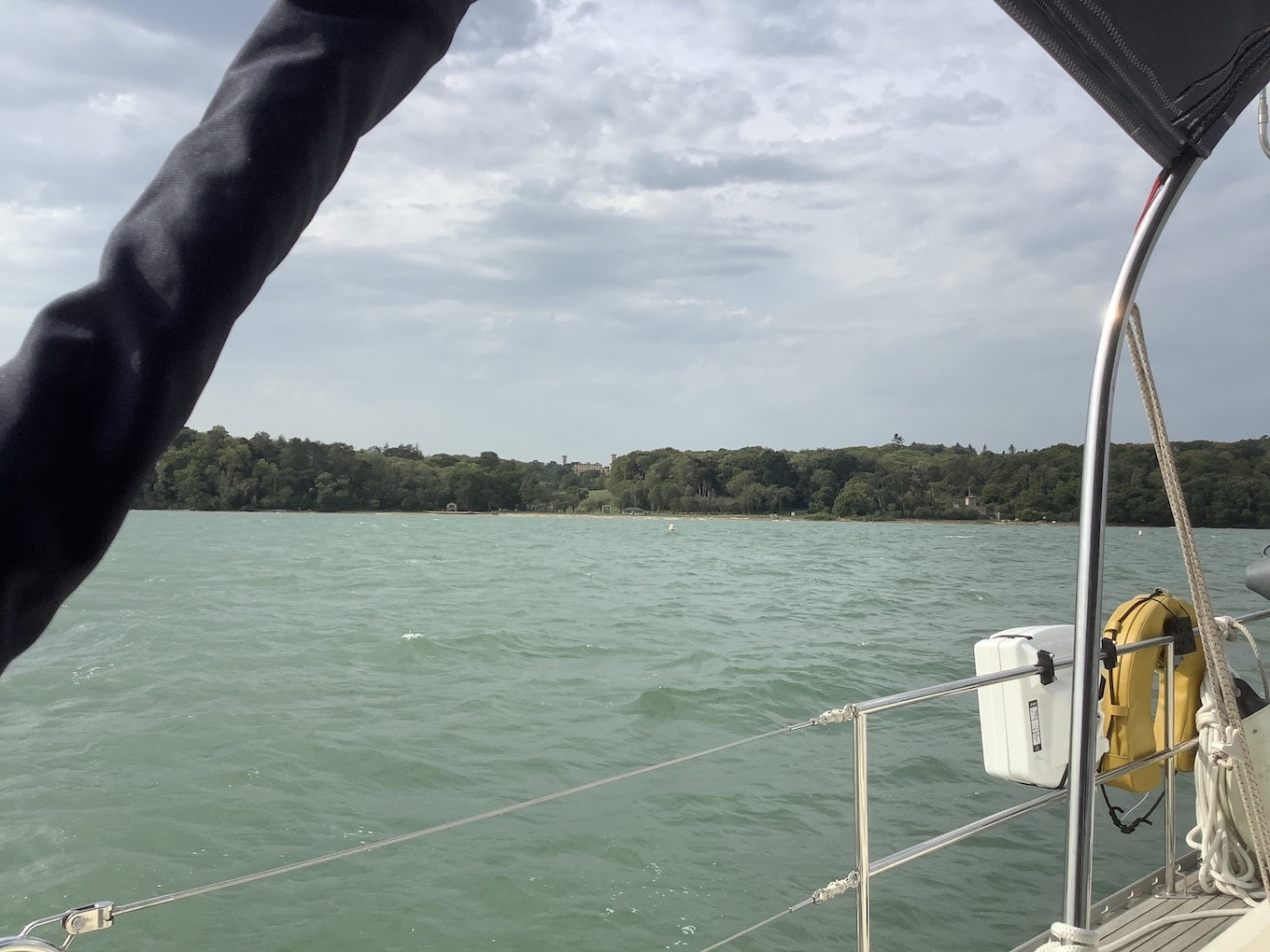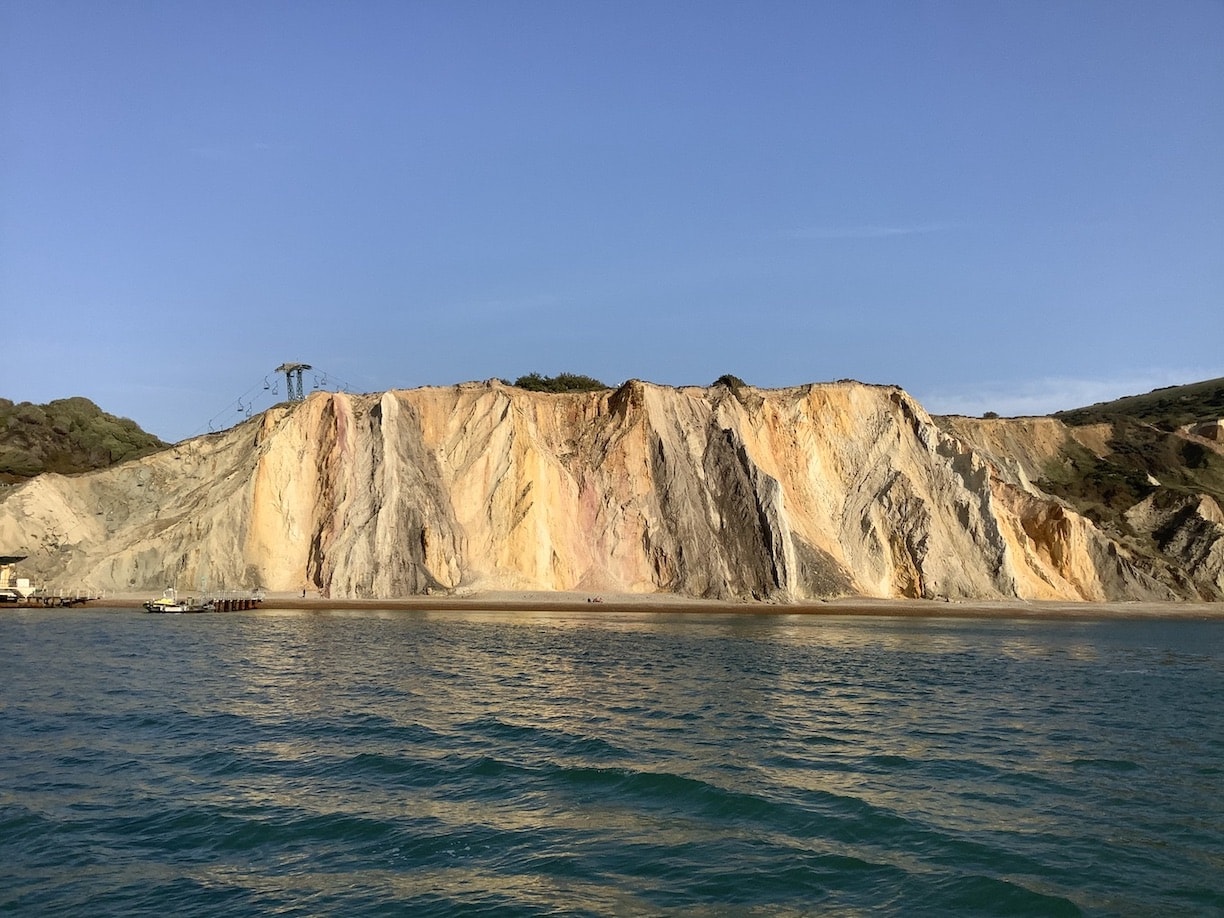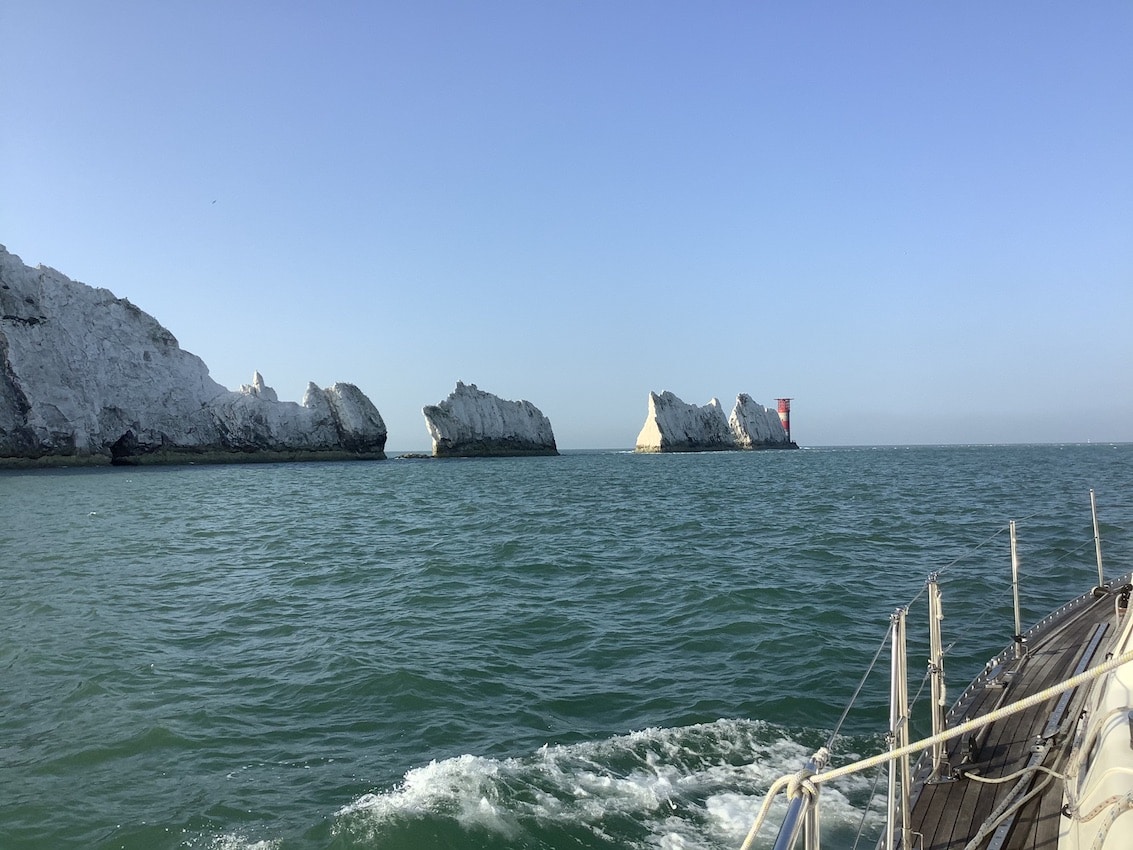By now, we should have been in the Canary Islands, preparing to cross the Atlantic to the Caribbean. Instead, we are making do with visiting the Isle of Wight!
The Isle of Wight is not only an island, but it is also a county. It is known for its mild climate, coastal scenery and verdant landscape of fields, downland and chines. We have visited it several times in the past on family holidays and explored the interior extensively. This time, we would be exploring the coastline, especially its secluded bays.
Since leaving Ipswich at the start of September, we had spent most of our nights in marinas (the eastern end of the south coast is not known for safe overnight anchorages). One great thing about the IOW is that we have plenty of anchorages to choose from.
When spending a night at anchor, choosing the right place is very important. We need to consider the predicted direction and strength of the wind – no one wants to be awoken in the night with strong gusts blowing the boat onto the shoreline! We also check the water depth. Escapade has a 2m keel under her, so we need to be in water over 2m deep. We always check the depth before we drop the anchor, but also the state of the tide. In some areas of the Solent, the difference in water depth between high and low tide can be up to 5m. We have to ensure that we are in deep enough water to allow for the tide going out, but also that we have enough anchor chain out to allow for the tide rising. It takes some time to get it right, but it means that we can sleep soundly knowing we will be safe overnight!
One of the most popular anchorages is Osbourne Bay. This is on the north east side of the island and provides good shelter when winds come from the south/south west/south east.
The bay takes its name from Osbourne House estate which owns the land facing the bay. The House is a former royal residence which was built between 1845 and 1851 for Queen Victoria and Prince Albert to use as a summer home. It has also been a Royal Naval College and Military convalescent home. It is now under the care of English Heritage and is open to the public.
Unfortunately, although we can anchor nearby, we are not allowed to go ashore. We have to be content with viewing it from afar.

A less popular anchorage is Alum Bay at the western tip of the island. Whilst the bay is popular with tourists during the day, it is rarely a safe anchorage at night. This is because it provides no protection from usual south westerly winds. We took advantage of a rare northerly wind and spent the night there.
The bay is well known for its multicoloured cliffs. I did read about how they are formed, but it was quite technical so, if you are interested, you can read it yourself! I do know that tourists can make ornaments using coloured sand layered in little glass jars. In the past, visitors could go and collect their own land from the cliffs, but this is now prohibited by law.
Alum Bay is also known for its great views of the Needles. The Needles is a row of three stacks of chalk that rise 30m out of the sea. The formation doesn’t look at all like needles. However, it takes its name from a fourth needle shaped pillar called Lot’s Wife. This collapsed in a storm in 1764 and the name stuck.
The lighthouse at the western tip warns passing vessels to keep clear.
Watching the sunset, that evening was an amazing sight!


Some great writing and photos. Stay safe out there. Loved the isle of White and had a few duper holidays there in my teens. I look forward to coming to see you , probably when I’m retired. We could meet up somewhere beautiful in Europe couldn’t we.
Got to get back to the day job. X
Hi,
Thanks for the comments. I am pleased someone is reading them!
Europe sounds like a plan…. looking forward to meeting up.
Stay safe and don’t work too hard!! x
Enjoyed Osborne Bay for the short time we anchored there, Jane puking up in the crisp bowl being one of the highlights, an amazing day not least by the fact I didn’t puk. Enjoy your rest now back at base camp
It was certainly a lot calmer than when we were there with you and Jane!! Pleased that you enjoyed your sail with us; we did too. x
PS Not sure Jane will appreciate you telling the world about her being sick!!!
Another lovely update, thank you. You must be finding it much cooler out on the water. Are you staying in these waters for the rest of the winter? Take care and stay safe.
John and Heather
Hi,
Lovely to hear from you both. I follow your adventures on Facebook, so I know you are keeping busy too.
Pleased you are enjoying the posts. We are actually back in Ipswich now after 7 weeks away. We managed to get down to Salcombe – so more posts to come.
Part of the reason for coming back was the cooler (and windier) weather. We have a berth in Ipswich for the winter, so can plug into shore power and run the heating!! The plan is to stay here until April/May and then, hopefully the world will have calmed down bit. At that point we will head for the Spanish Rias and then Portugal.
Stay safe xx
Remembering going to the Isle of Wight on a school trip with you many years back … doesn’t look much different! Bet you never imagined then that you’d be sailing around it! Stay warm and safe x
Hi,
It certainly brought back memories. I was remembering our Hostelling days on the pre-trip. It is still a lovely place to visit – highly recommended.
Hope is well with you and the family.
x